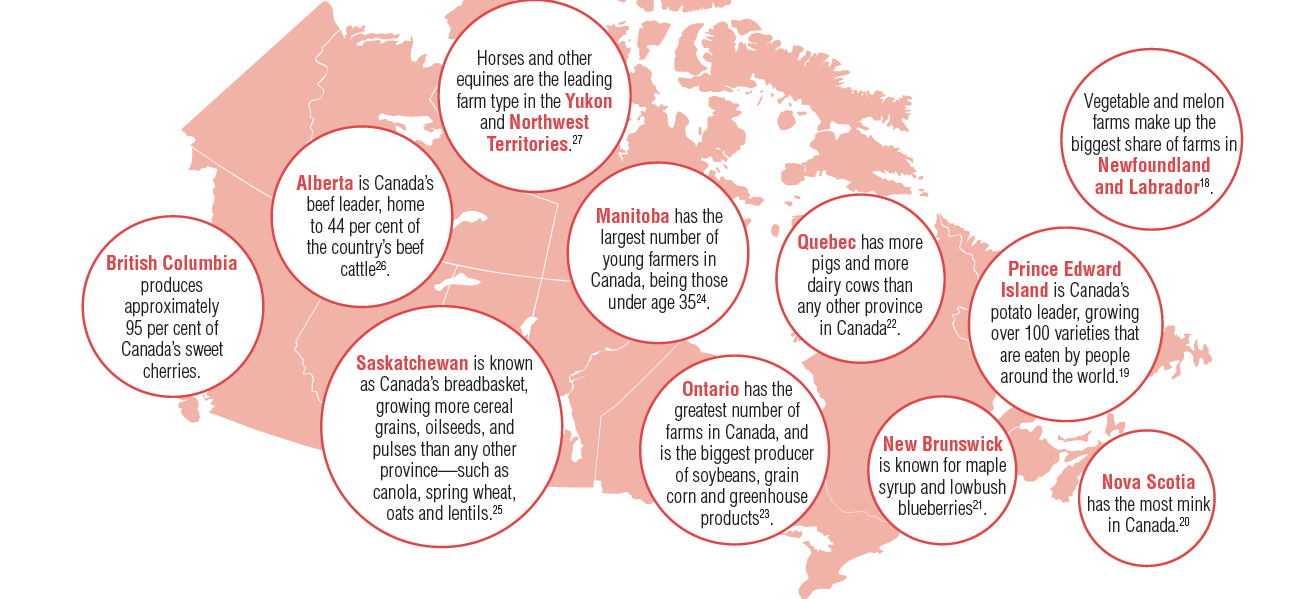Canadian Farms & Farmers
Farming across Canada
The sheer diversity of Canadian agriculture is part of what makes Canada a global leader in food production. This is a big country – the second
largest in the world – and the kinds of farms we have vary from coast to coast depending on our geography and climate.
Here’s a snapshot of what farming looks like across the country:

British Columbia produces approximately 95 per cent of Canada’s sweet cherries. Nova Scotia has the most mink in Canada. Alberta is Canada’s beef leader, home to 44 per cent of the country’s beef cattle. Saskatchewan is known as Canada’s breadbasket, growing more cereal grains, oilseeds, and pulses than any other province—such as canola, spring wheat, oats and lentils. Manitoba has the largest number of young farmers in Canada, being those under age 35. Horses and other equines are the leading farm type in the Yukon and Northwest Territories. Vegetable and melon farms make up the biggest share of farms in Newfoundland and Labrador. Quebec has more pigs and more dairy cows than any other province in Canada. Ontario has the greatest number of farms in Canada, and is the biggest producer of soybeans, grain corn and greenhouse products. Prince Edward Island is Canada’s potato leader, growing over 100 varieties that are eaten by people around the world. New Brunswick is known for maple syrup and lowbush blueberries.


